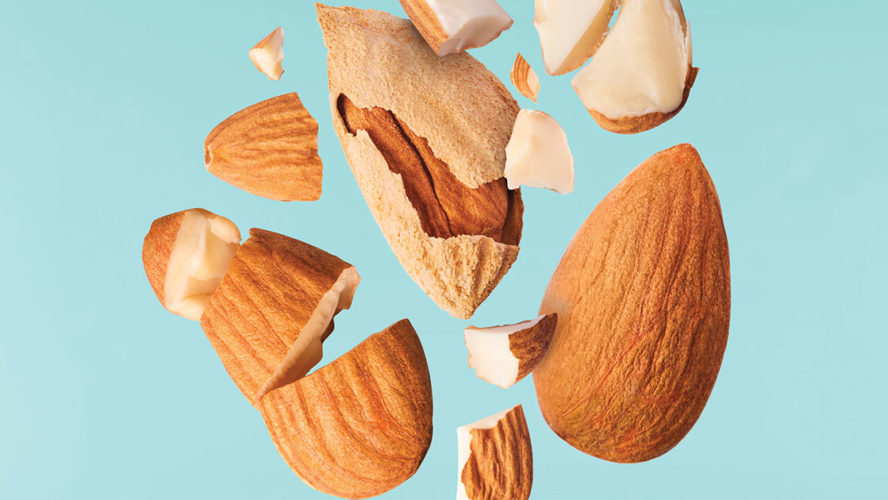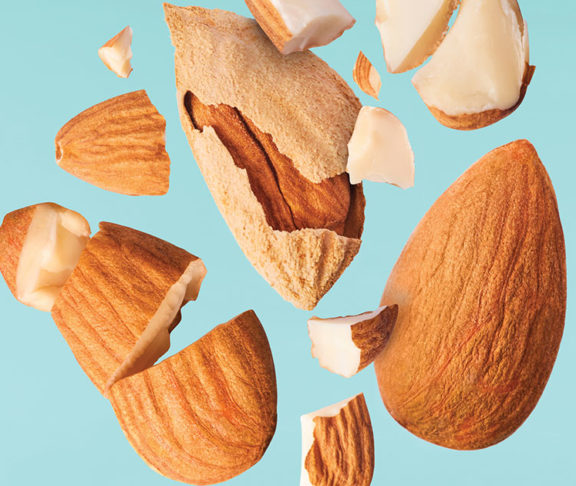Now’s the time to debunk the misconception that almonds are water-wasters.

Dan Sonke
Director of Sustainability, Blue Diamond Growers
The California almond industry produces about 80% of the world’s almonds; its consistently warm climate is one of the only in the world that can support the plant. While almonds grown in California do require a lot of water, that’s true of nearly all the crops grown in the region.
According to Blue Diamond Growers (BDG) — a cooperative of 3,000 small-scale almond farmers in California —almonds are 1 of more than 400 commercial crops grown in the state. They’re grown on 20% of the state’s farmland but use just 13% of California agriculture water.
“We use about a third less water to grow a pound of almonds today than we did 20 years ago,” said Dr. Daniel Sonke, director of sustainability for BDG. BDG is working with the Almond Board of California to reduce almond water use by another 20% by 2025.
Sonke says over 85% of almond orchards currently use micro-irrigation systems, which is twice the efficient irrigation rate of other crops in California. Other sustainable technologies in use include soil and weather sensors.
Sustainability focus
Blue Diamond’s sustainability focus includes water, bees, and carbon. The company is committed to limiting water use and using high-efficiency irrigation, improving the health of bee and other pollinator populations, and reducing carbon emissions.
Two years ago, BDG started paying incentives to growers who participate in the Blue Diamond Orchard Stewardship Incentive Program. To qualify, growers must meet milestones in the California Almond Stewardship Platform (CASP), including finishing all nine sustainability modules and getting their orchard “Bee Friendly Farming Certified,” which requires planting the equivalent of 3% of their orchard land in flowering plants, providing clean water for pollinators, and protecting pollinators from pesticides.
With over 40% of its growers participating, BDG has more growers enrolled in a sustainability program than any other almond company in the world. To help reduce an orchard’s carbon footprint, BDG encourages farms to use whole-orchard recycling at the end of a tree’s life cycle. The practice involves chipping the tree into pieces and putting it back into the soil.
“We’re really investing resources to use our orchards to benefit not only ourselves but California, society, and the environment,” Sonke said.
To learn more about how Blue Diamond is leading the way in sustainable almond growing, visit www.bluediamond.com/sustainability.


